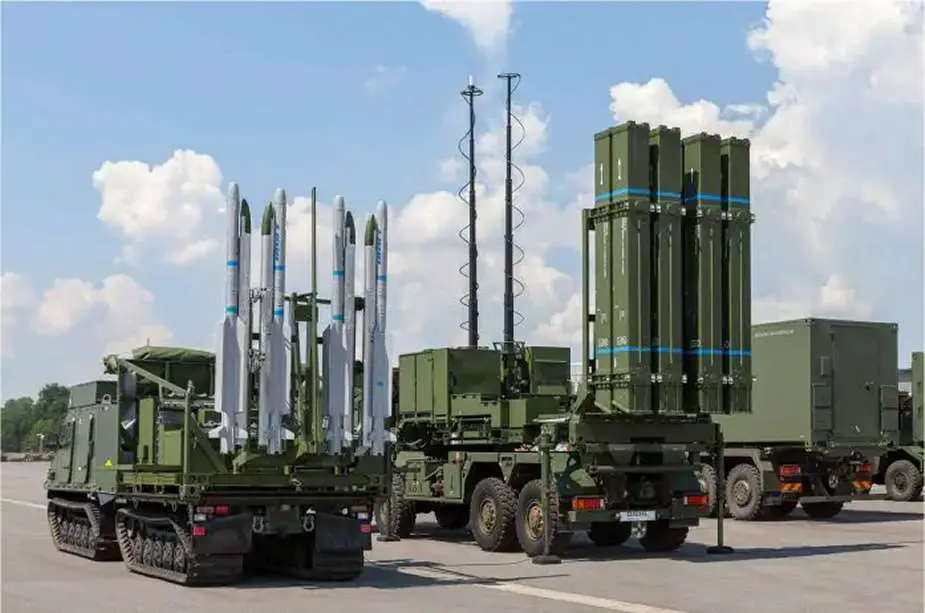Breaking news
Diehl Defence ramps up production of IRIS-T missile systems.
On 5 September, the German company Diehl Defence announced plans to significantly increase the production of IRIS-T systems and their associated missiles. This move comes in the wake of the large-scale war initiated by Russia in Ukraine, which has led to a significant surge in demand for these systems. By 2024, Diehl Defence plans to produce three to four systems, and by 2025, at least eight. Missile production for the IRIS-T is also expected to triple this year, with the company planning to manufacture around 400 to 500 missiles per year starting in 2024.
Follow Army Recognition on Google News at this link

IRIS-T SLS on the left and IRIS-T SLM on the right(Picture source: Dhiel Defence )
The IRIS-T (InfraRed Imaging System Tail/Thrust Vector-Controlled) is a medium-range infrared-guided air-to-air missile developed under a program led by Germany. It is available in both air-to-air and ground-to-air versions for anti-aircraft defense. The missile was developed to replace the AIM-9 Sidewinder used by some NATO member countries. The air-to-air variant was deployed in 2005, while ground-to-air defense systems were introduced later. The short-range IRIS-T SLS was deployed in 2015, and the medium-range IRIS-T SLM in 2022. The IRIS-T SLM can counter ground-to-air and cruise missiles, including low-altitude stealth missiles like the Kalibr.
The IRIS-T SLM battery consists of three truck-mounted launchers, each carrying eight missiles, and a separate command vehicle that can be positioned up to 20 kilometers away. The command vehicle integrates multiple radar sources and is capable of launching and simultaneously tracking all 24 missiles. The missile has a mass of 87.4 kg, a length of 2.94m, and a diameter of 127mm. It has a maximum operational range of 25km and can reach altitudes ranging from sea level to 20,000m. It is capable of reaching a maximum speed of Mach 3.
The IRIS-T SLS, on the other hand, has a range of 12km and is mounted on a tracked vehicle towed by another, while the IRIS-T SLM is mounted on a MAN SX44 6x6 or MAN SX45 8x8 truck chassis.
Germany has already provided Ukraine with two IRIS-T SLM installations as well as two IRIS-T SLS systems, primarily for the defense of Kyiv against Russian missile attacks. According to Harald Bushek, the program director of the company, the IRIS-T system has successfully intercepted over 110 targets, most of which were Russian Kalibr-type cruise missiles, with a success rate of nearly 100%. Earlier this year, the system successfully repelled an attack on Kyiv by simultaneously intercepting 13 Russian cruise missiles.
Before Russia's invasion of Ukraine, only a few Western countries had purchased this system, reflecting a general trend toward downsizing air defense scales after the end of the Cold War. However, NATO allies are now rushing to order IRIS-T systems for their armed forces. Countries like Estonia and Latvia are expected to sign contracts in the coming weeks. Due to the conflict in Ukraine, demand for such equipment is soaring. The IRIS-T series has proven its effectiveness, thereby convincing several potential buyers.


























